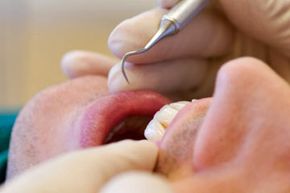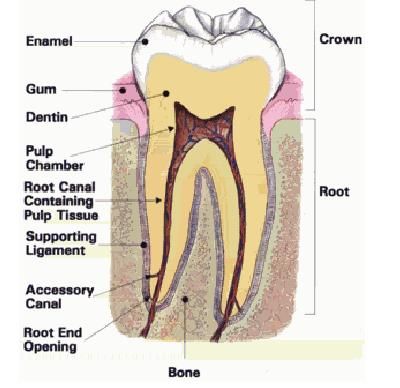Plaque likes to make itself at home in our mouths. It comes on strong after we eat food and is a soft, miniscule mix of bacteria and acid that grows into a filmy yellow coating on teeth. Just like a messy houseguest, if the plaque is left alone to hang out and have friends over -- more and more bacteria -- eventually every surface and crack and crevice needs a thorough cleaning. And just as a layer of moisture and gunk leaves rings on coffee tables and dingy stains and crust on upholstery, plaque settles in, and spreads out, and over time hardens to the point that you can feel it on your teeth. By then, it has worn out its welcome and needs to be forcibly evicted for the greater good of the teeth.
Routine oral hygiene goes a long way toward keeping plaque at bay, but it is the nature of plaque bacteria to stick to other bacteria in the mouth, so even the most valiant efforts in the fight require the right tools and trained allies: dentists and hygienists [source: McDonald]. Just 20 minutes after we eat, food particles, bacteria, sugars, acids and saliva combine, and become plaque. This short window of time is when bacteria are most active [source: NIH]. Starchy, sugary and sticky foods are especially effective for plaque growth because of their acid content and ability to cling to teeth.
Advertisement
As early as 5000 B.C. people were looking for the source of tooth decay, arriving at the conclusion that the cause was "tooth worms." And until the invention of a boar-bristled toothbrush in 1498 and a nylon toothbrush in 1938, cultures worldwide have used tree bark and twigs, called chew sticks, to clean their teeth -- still a common practice in parts of Asia and Africa. Dental floss was invented in about 1815, though evidence of toothpicks and between-teeth cleaning goes back thousands of years [sources: JADA; LOC; Oral-B].
While the cause of plaque formation and tooth decay isn't actual worms, in 1674 Antonie van Leeuwenhoek, a Dutch microscope hobbyist who wasn't a trained scientist, found worm-like, moving bacteria while studying samples from inside his own mouth. His informal studies led to more scientific research into bacteria and its residue, or biofilm [source: Encyclopaedia Britannica]. Ancestors of those same bacterial worms are alive and well and thriving in evolved forms in the 21st century, and people worldwide still strive to get rid of them.
Can we get the upper hand in this bacteria battle? We'll get up close and personal with plaque before showing it the door, next.
Advertisement



